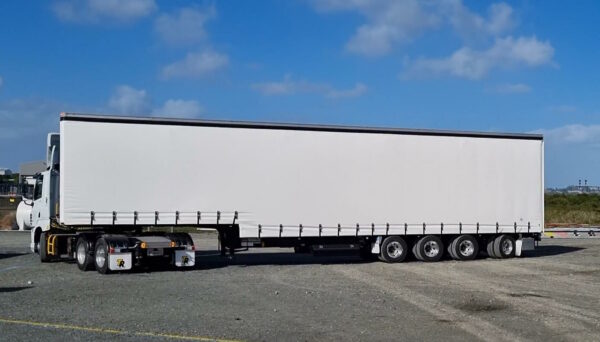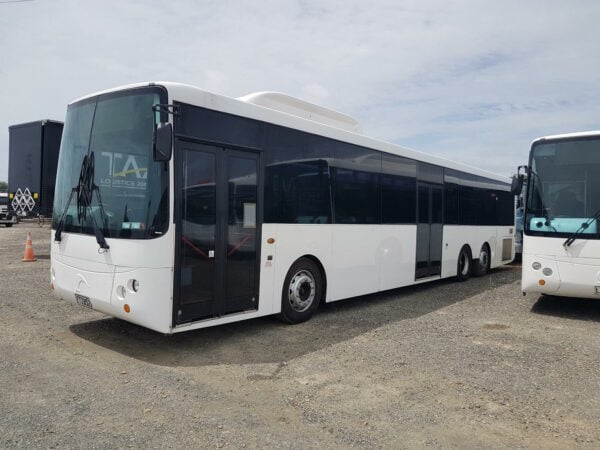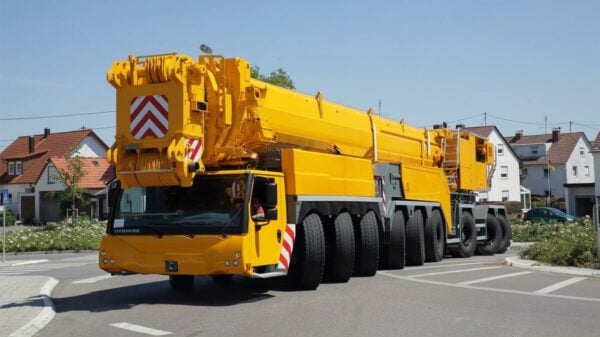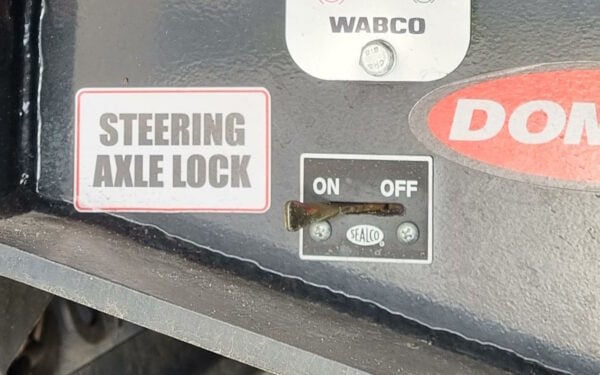On some vehicles, the rear axle passively steers or self-steers.
Advantages of a self-steering rear axle
It improves the turning circle. The maximum turning circle for a vehicle in New Zealand is 25m from wall to wall (excluding collapsible mirrors), so with extremely long trailers like the one shown below, a rear-steer axle is essential to keep them within this limit.
It reduces tyre wear by minimising the amount of sideways scrubbing that happens when turning. Some manufacturers claim that it will save up to 4 tyres every 100,000km
It improves fuel economy by up to 1% by reducing drag on the rear axle.
Are there any disadvantages of a self-steering rear axle?
A self-steer rear axle may not be able to physically support as much weight as a rigid rear axle (although, in the VDAM rules, each axle supports the same amount).
It’s more expensive to install a self-steering axle.
What type of vehicles use self-steering rear axles?
On some three-axle trailers and all four-axle (quad) trailers, the rear axle of the trailer passively steers. Some older quad trailers had two rear axles steering (either one at the front of the axle set and one at the rear, or two at the rear), but this created instability and has not been permitted on new trailers since 1/2/2017.


Three-axle buses and coaches often have a rear-steer axle to help them manoeuvring around tight streets in cities.

There are examples of 5-axle prime movers that have two steer axles, two drive axles and a rear-steer axle.
Some four- and five-axle prime movers and rigid vehicles have a rear-steer axle.
Large mobile cranes with up to 9 axles may have up to six active steering axles on the front and up to three passive steering axles at the rear. In some cases, all steering axles may be active, for example with hydraulic modular trailers used for transporting extremely heavy loads.

The steering axle can also be a tag axle which is able to be lifted.
The rear steering axle must be certified unless it’s in a quad-axle set of a specialist overdimension vehicle.
The rear steering axle may be able to be locked using a switch or lever.

The rear steering axle is something you must be aware of when reversing a semitrailer. The driver must pull far enough forwards for the rear steering axle to lock in the straight-ahead position.
The rear steering axle won’t turn on its own as long as it is locked. When reversing, there’s no need to enable the steering axle lock because the mechanism prevents it from turning when in reverse (unless it’s already turned), hence why you need to pull forwards far enough.

